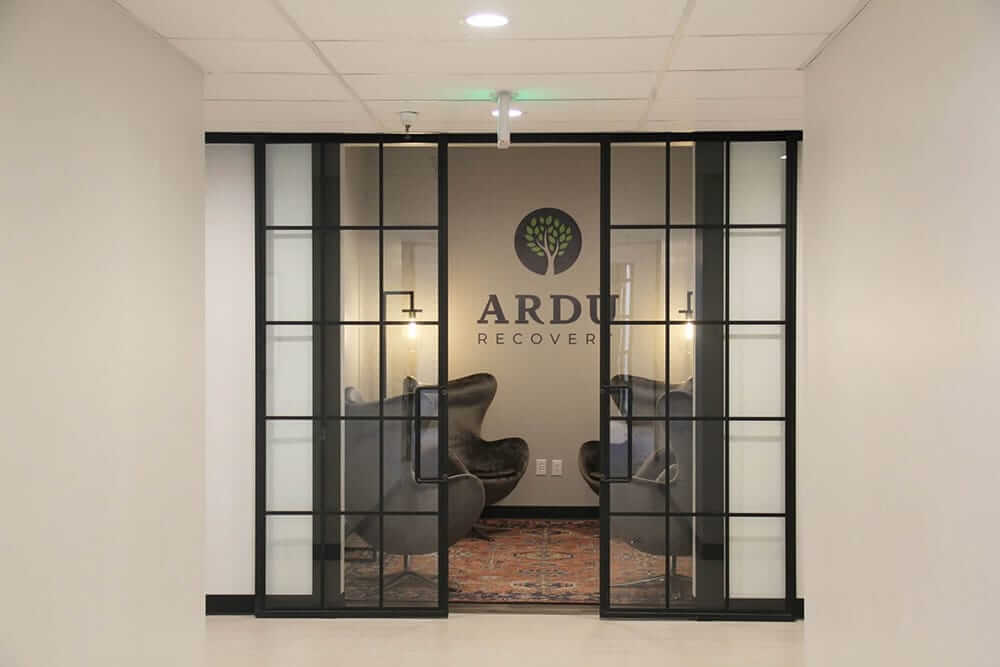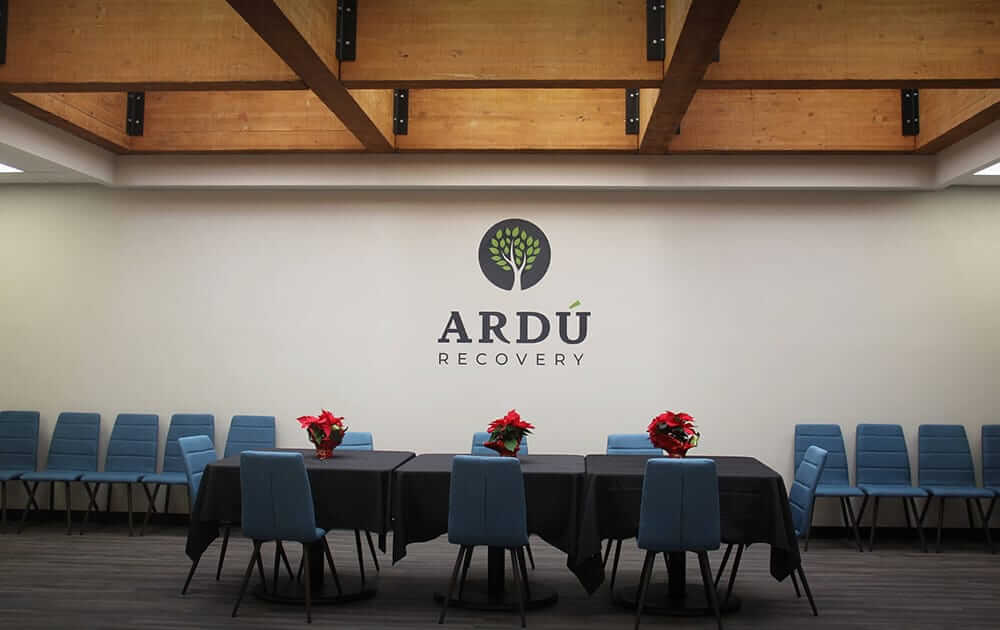Written by Drew Redd. Mina Draskovic, B.Psy., reviewed this content for accuracy.
Hydrocodone is a powerful prescription opioid. It’s among the most commonly prescribed medications for moderate to severe pain, yet it’s also frequently misused. According to the Drug Enforcement Administration, nearly 7 million Americans over the age of 12 reported misusing hydrocodone in 2016, although this number decreased to 5.5 million by 2018.
Don’t attempt to quit hydrocodone without medical supervision; you may set yourself up for some severe withdrawal symptoms. Ardu’s drug detox services provide a safe, controlled environment to manage the risks of hydrocodone withdrawal and begin the journey to recovery.
Hydrocodone is a highly addictive opioid medication. Here’s why it’s so dangerous:
Hydrocodone is an effective pain management tool when used appropriately. For those with a history of substance use disorder (SUD), doctors normally resort to alternative pain management strategies.
Hydrocodone withdrawal can be an intense and uncomfortable experience. When you quit hydrocodone use, your body tries to adjust to the absence of the drug. This adjustment period triggers a range of physical and psychological withdrawal symptoms.
Common signs of hydrocodone withdrawal include:
While not typically life-threatening, these symptoms can be severe enough to drive many people back to using the drug. If you notice someone you care about is going through withdrawal, contact our detox center and get professional help.
Hydrocodone withdrawal is rarely life-threatening, but it can be extremely uncomfortable and potentially dangerous. The doses of hydrocodone abused, the duration of use, and the user’s individual health conditions dictate the severity of symptoms.
Here are some potentially dangerous aspects of hydrocodone withdrawal:
Given the potentially dangerous nature of hydrocodone withdrawal, those struggling with hydrocodone abuse often require a medical detox program. Professional medical detox services ensure a safe and successful recovery journey.
Let’s talk about why getting professional help for hydrocodone detox is so important, and why a place like Ardu Recovery Center could be your best bet:
This comprehensive approach addresses both the physical and psychological aspects of addiction, providing a strong foundation for lasting recovery.
Help is just a click away. Reach out to our team at Ardu today, and take the first step on your path to a healthier, happier life free from the chains of hydrocodone addiction.
“Ardu is such a warming place to be. The moment you walk through the doors you feel the love everyone has for one another. Staff genuinely cares about each other and the clients, they check in frequently and always try to make sure clients are getting the most out of the experience.”
Our hydrocodone detox program safely eliminates toxins from your body while effectively managing withdrawal symptoms. Our experienced medical team collaborates with you to develop a customized detox plan tailored to your unique needs and objectives.
Our comprehensive medical detox includes round-the-clock monitoring, targeted medications for symptom relief, and a combination of proven medical and holistic therapies to support both your physical and emotional well-being. The detox process can be challenging, which is why we place the highest priority on your comfort and safety throughout your stay.
To enhance our medical approach, we offer a range of holistic detox services to ease withdrawal, reduce stress, and promote overall healing:
Many people seeking help at our detox center for hydrocodone addiction also struggle with co-occurring mental disorders. Ardu offers an integrated dual diagnosis treatment to address both substance use and mental health issues simultaneously. Our comprehensive approach includes personalized treatment plans combining medication management, therapy, and skill-building exercises.
This integrated model is crucial because mental health problems often underlie or exacerbate addiction, and treating one without the other can lead to relapse. During hydrocodone detox, our dual diagnosis treatment provides immediate support, managing symptoms of withdrawal while addressing mental health concerns.
Our detox program combines expert care, compassionate support, and innovative therapies to provide a strong foundation as you move forward into the next phase of your treatment journey.
After detox, we address the underlying causes of your hydrocodone dependence and help you build the skills needed for long-term recovery. Our experienced team will work with you to create an effective treatment plan that may include:
We offer inpatient and outpatient treatment options to meet your unique needs in therapy. Our inpatient rehab provides a structured, immersive environment with 24/7 support. You’ll benefit from a structured daily schedule filled with individual and group therapy sessions, educational classes, and recreational activities. You’ll have constant access to medical care and support from our multidisciplinary team.
If you opt for our outpatient therapy programs, you’ll attend therapy sessions and classes on a regular basis, either several times a week or daily, depending on the program’s intensity. These programs allow you to receive treatment while maintaining work or family commitments.
Are you ready to take back the reins of your life into your own hands? Contact Ardu Recovery Center and take the first brave step towards a healthier, addiction-free future today.








A hydrocodone detox center is your first step toward breaking free from opioid use disorder. At Ardu, we offer comprehensive hydrocodone addiction treatment plans that support long-term recovery. Our team of addiction specialists and healthcare professionals is ready to guide you through the treatment process, as you build a foundation for lasting sobriety and reducing relapse risk.
To enroll in Ardu’s hydrocodone detox program, contact us online or call (801-810-1234). We’ll work with you to create a personalized recovery plan tailored to your needs during detox and beyond.
We accept most major insurance plans to cover treatment costs. For insurance verification or financial assistance options, visit our website or contact our admissions team.
Take the first step towards a hydrocodone-free life today. Our team is here to answer your questions and address your concerns as you begin your recovery journey.

Drew Redd is the executive director of Ardu Recovery Center and is dedicated to empowering people on their journey to sobriety.
Hydrocodone remains detectable in the body for 2–4 days, but this period of time is influenced by the dosage, frequency of use, metabolism, and individual physical characteristics. Chronic pain patients or those with opioid use disorder may have the drug present in their system for longer. Urine tests can detect hydrocodone for up to 4 days, while hair follicle tests may show use for several months. The drug’s half-life is about 4 hours, but its metabolites can be detected for longer.
The patient’s liver function, kidney health, and body mass index can affect how long the drug stays in your system. During the withdrawal process, traces of the drug may still be present even as opioid withdrawal symptoms begin to manifest—they too correlate with how long the drug has been used and in what amounts. For those undergoing treatment for a substance use disorder such as hydrocodone abuse, the way the drug affects the body and stays in the system is important because it affects withdrawal intensity, detox protocols, and relapse risk.
Hydrocodone is known by its brand names such as Vicodin, Norco, and Lortab. These prescription drugs combine hydrocodone with acetaminophen. They belong to the class of drugs known as opioid painkillers and are sometimes called synthetic opioids, though they’re actually semi-synthetic.
As a prescription painkiller, hydrocodone is used for moderate to severe pain relief. It’s a controlled substance because of its potential for misuse and the development of opioid dependence.
A dose of hydrocodone every 4 hours is not recommended because of the risk of overdose and increased potential for misuse. The appropriate dosage and frequency are determined by your health care provider based on your medical history, pain level, and other factors. Overuse can lead to opioid dependence and uncomfortable withdrawal symptoms when you stop using it.
Here’s what you need to know about taking hydrocodone:
For opioids such as hydrocodone, the acute withdrawal symptoms typically peak within 1–3 days and subside over 5–7 days. Some symptoms may persist for weeks or months in a phase known as post-acute withdrawal syndrome (PAWS). The body’s natural detoxification process involves the liver and kidneys filtering the drug from the bloodstream. Factors such as hydration, physical activity, and overall health can influence this process.
For chronic users, traces of the drug may be detectable for longer periods. Complete clearance of the drug and its metabolites can take several days to weeks, depending on the individual and the specific substance. In substance abuse treatment settings, medical professionals often use this information to design appropriate detox protocols and manage withdrawal symptoms effectively.
Hydrocodone is not particularly toxic to the liver. Many hydrocodone products are combined with acetaminophen, which can cause severe liver damage in high doses. Chronic use or misuse of these combination drugs can lead to liver toxicity over time. Always follow prescribed dosages and avoid alcohol while taking hydrocodone to protect liver health. The risk of liver damage increases with higher doses and longer periods of use.
Symptoms of liver toxicity may include abdominal pain, yellowing of the skin or eyes (jaundice), and dark urine. Patients with pre-existing liver conditions should use hydrocodone with caution and under close medical supervision. In substance abuse treatment programs, healthcare providers monitor liver function as part of the overall health assessment during detox and recovery.
The strongest painkillers are opioids, with fentanyl and carfentanil being among the most potent. Strength doesn’t always equate to better pain relief or safety. Hydrocodone is a moderately strong opioid, while morphine and oxycodone are considered equally potent. Other powerful opioids include hydromorphone and methadone.
The most appropriate painkiller depends on your needs, pain level, and medical history and is determined by your healthcare provider. Non-opioid options like NSAIDs or local anesthetics are better in some cases because of lower addiction potential. In substance abuse treatment settings, the focus is often on finding alternative pain management strategies that don’t involve highly addictive opioids.
Hydrocodone can have negative effects on the cardiovascular system if misused.
When used as prescribed under medical supervision, the risks are generally manageable. Always inform your doctor of any pre-existing heart conditions. The American Heart Association has noted concerns about the long-term cardiovascular effects of opioid use.
Hydrocodone is a legal prescription drug in the United States, classified as a Schedule II controlled substance by the Drug Enforcement Administration (DEA). This means it has accepted medical uses but also has a high potential for abuse. It’s legal when prescribed by a licensed healthcare provider and used according to directions. Possession without a valid prescription or selling or distributing hydrocodone is illegal and can result in severe penalties.
The Controlled Substances Act regulates its manufacture, distribution, and possession. In substance abuse treatment centers, it’s recognized as a commonly abused prescription drug. The American Psychiatric Association classifies hydrocodone addiction under opioid use disorder in the Diagnostic and Statistical Manual of Mental Disorders (DSM-5).
Hydrocodone is not a steroid. It’s an opioid painkiller, a class of drugs that work by binding to opioid receptors in the brain and spinal cord to reduce pain signals. Steroids are a different class of drugs that mimic hormones produced in the adrenal glands. While both can be used to treat certain medical conditions, they have very different mechanisms of action and effects on the body. Hydrocodone is primarily used for pain management, while steroids are often used to reduce inflammation or suppress immune responses.
Chow, S. L., Sasson, C., Benjamin, I. J., Califf, R. M., Compton, W. M., Oliva, E. M., Robson, C., & Sanchez, E. J. (2021). Opioid Abuse and Its Relationship to Cardiovascular Disease and Brain Health: A Presidential Advisory From the American Heart Association. Circulation, 144(13). https://doi.org/10.1161/cir.0000000000001007
DSM-5 Criteria for Diagnosis of Opioid Use Disorder (p. 541). (2013). American Psychiatric Association. https://www.asam.org/docs/default-source/education-docs/dsm-5-dx-oud-8-28-2017.pdf
How to recognize teen addiction
What are the physical symptoms of alcohol withdrawal?
Can chemical imbalances cause addiction?
What are the most damaging drugs to your body?
What to expect from women’s rehab